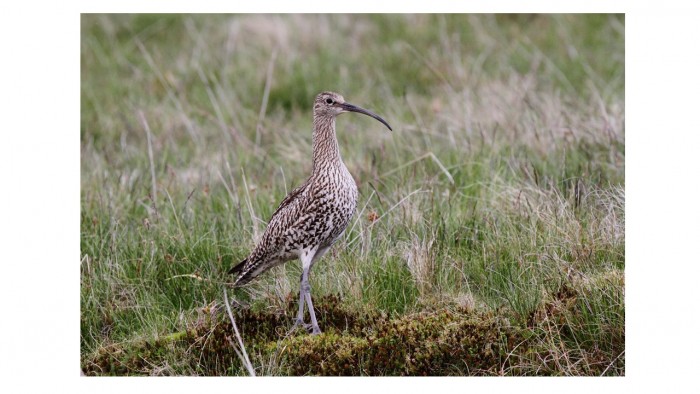We are delighted to have been awarded a contract, by Natural England, to carry out upland breeding bird surveys in the Forest of Bowland.

(Photo credit: curlew, courtesy of Mark Breaks)
We are delighted to have been awarded a contract, by Natural England, to carry out upland breeding bird surveys in the Forest of Bowland.

(Photo credit: curlew, courtesy of Mark Breaks)
Due to the large number of applications received (>200) we are not able to reply to each applicant quickly. We will however respond in writing or email to every application over the coming weeks. Thank you for showing an interest in our company and also for being patient whilst we review applications.
We are pleased to announce that we successfully received CHAS registration during March this year. Registration with the scheme is an accepted industry standard in respect of our organisational health and safety and our specific health and safety arrangements.
Natural England introduced a new licence in 2016 to: intentionally damage or destroy water vole burrows and to disturb by displacing water voles occupying burrows before carrying out lawful development works (licence CL31).
Previously the only licencing requirements in respect of water vole related to their live capture using traps.
Two of our staff (Jeremy and Ellen) have recently received their CL31 licence. Applicants need to be able to demonstrate suitable recent experience to enable them to obtain a licence from Natural England in respect of displacing water vole as a consequence of development works.
We are currently looking to fill a number of posts:
New Lanark Office, Scotland
Ecologist (permanent, full time)
Ecological Clerk of Works (permanent, full time)
Clitheroe Office, England
Assistant/Graduate Ecologist (permanent, full time)
For further information follow the link to the job advert below:
This year the staff at Bowland Ecology contributed to the Bowland Haytime Project, a scheme launched by the Yorkshire Dales Millennium Trust and the Forest of Bowland Area of Outstanding Natural Beauty. The project aims to restore species-poor meadows by harvesting and spreading wildflower seed from species-rich ‘donor’ meadows, whilst raising public awareness of local hay meadows. Staff at Bowland Ecology surveyed meadows at Slaidburn to see how successful recent restoration has been, improving identification skills of grasses and wildflowers along the way.
The meadow restoration is proving to be very successful, with an abundance of new wildflower species, including the occasional orchid, colonising meadows that were previously managed as grazed pasture.
You can find out more about the project here: http://www.ydmt.org/programme-details-bowland-hay-time-14612”
Due to our increasing workload north of the border, we will be opening our Scottish Office on the 30th of November at; Level 1, Robert Owen School New Lanark ML11 9DB. The office will be headed up by Senior Ecologist Lucy Eliff who will initially be supported by our latest permanent recruit Caroline Thompson. Caroline has been working in the Environment Sector for more than 12 years and has a strong background in ornithology.
The office is situated within the New Lanark World Heritage Site overlooking the River Clyde. http://www.newlanark.org/
Bowland Ecology was contracted by Natural England in August 2015 to undertake a research project that aims to assist in the management of vegetation on sand dune systems along the Sefton Coast, north-west England. Rabbits are a key stone species of coastal sand dunes, maintaining an open, short and diverse sward, limiting/slowing the process of succession to a more widespread species poor, rank grassland and scrub. Myxamotosis in the 1950s caused a widespread collapse in the rabbit population; this was followed more recently by rabbit haemorrhagic disease, after which population densities have struggled to recover. The fall in rabbit populations is considered to have been a contributing factor in the transition of the dune habitats along the Sefton Coast towards rank grassland, scrub and woodland habitats. This research aims to: review rabbit monitoring techniques and derive recommendations for the most useful technique on coastal sand dunes, giving consideration to practicality, costs and robustness of data; and, to review information on rabbit (re)introductions onto sand dune habitats, to assess feasibility, practicality of establishing a breeding population of wild rabbits and costs.
If the conclusions of the study are favourable, Natural England may ultimately undertake a trail re(introduction) of rabbits to the Winsdale and Birkedale Hills LNR, to aid in the vegetation management of the site.
We are pleased to announce that Louise has recently achieved Chartered Ecologist status.
Following submission of an application and attendance at a professional interview Jeremy has achieved Chartered Ecologist status. There are currently less than 100 registered Chartered Ecologists in the UK.
‘What is a Chartered Ecologist?
Chartered Ecologists are active professionals who use their knowledge, experience and influence to promote and advance ecology as an applied discipline. They may work or have worked in local or national government, consultancy, the voluntary sector, statutory agencies, industry or academia but they are united by three common characteristics: